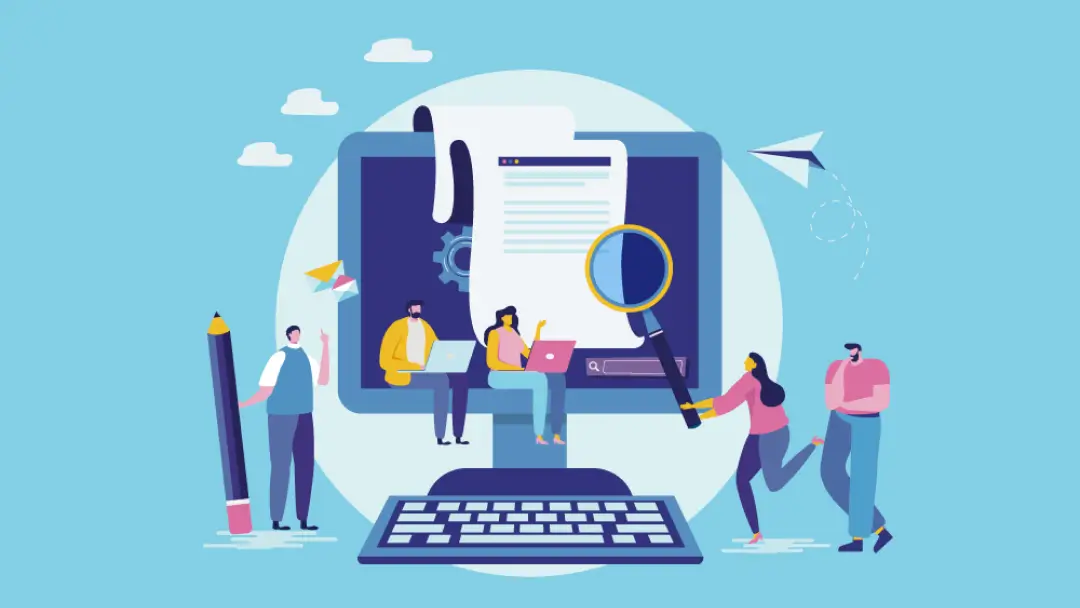How To Start a Meeting: Tips and Examples

A productive meeting starts with a strong opening. Whether you pose an icebreaker question or dive right into the agenda, the first few minutes set the tone and give attendees the energy they need to keep the ball rolling.
Learn how to start a meeting with examples, tips, and strategies to do it on the right foot.
10 tips to effectively start a meeting
There are dozens of strategies and tips out there to help you capture attendees’ attention. Here are 10 of the best:
1. Start the meeting on time
There's nothing more inefficient than re-starting a meeting every time a straggler arrives. Instead of catering to late participants, begin the conversation on time. If latecomers miss anything important, they can refer to the meeting notes later.
It's a simple strategy, but it accomplishes two things. First, it shows respect for everyone's time. And second, it establishes your reputation as someone who sticks to start times and meeting agendas — which means people know they shouldn’t be late in the future.
2. Create an agenda beforehand
Write and send a meeting agenda at least a day before the meeting. Remember to include information about start and end times and key topics. Without this, participants may not know what to prepare for the meeting, which could cause confusion.
Think of your agenda as an outline that tells participants what to expect from the discussion. Attendees can then show up with documentation, ideas, and other notes that add to the conversation.
3. Set clear goals and expectations
It's amazing how much wasted time stems from unclear goals. To avoid meandering conversation and excess questions, establish clear objectives and expectations in the meeting agenda, including who should participate, what needs to happen, and why.
Alongside reinforcing the meeting's purpose, these objectives inform your participants of why they're in the meeting and what you want to achieve with their help.
4. Actively engage participants
Once attendees arrive and understand what the meeting’s about, ask an icebreaker question to engage them directly. This can be relevant to the subject (“What topics should we address first?”) or not (“What’s something you’re looking forward to this weekend?”), depending on how formal the meeting is.
Don’t be afraid to have a good time. Even a few minutes of chatter breaks the ice and makes everyone feel at ease. Other fun ways to start a meeting include relevant personal anecdotes, jokes, and even statistics.
5. State and reiterate ground rules
If you have ground rules for meetings — especially sensitive ones — state them first to get everyone on the same page.
For example, when you plan to discuss a discipline-related matter, remind participants you assume the best about their behavior to put their minds at ease. As you remind them of the ground rules, they know you're not out to get them or point fingers.
6. Encourage participation
Not everyone in a group is equally willing to participate in meetings. Some people may choose not to share their thoughts, whether from shyness or a lack of knowledge about the subject.
But without participant input, you don’t have a complete picture of your attendees’ opinions and positions. It’s your responsibility to ensure everyone has a chance to speak — even if they don’t have much to say. Open the floor and make sure everyone has the space and respect they need to share.
7. Keep the meeting focused
When you don’t moderate the conversation, in-person and virtual meetings go off track quickly. And while a little extra chatter is a great team-builder, you need to keep the meeting flowing if you want to get everything done.
To avoid a lack of focus, tactfully remind participants of the meeting's purpose, ask them to listen actively, and redirect the meeting to the topic at hand. If something important arises, make note of it and discuss it later.
8. Encourage honesty
Nobody likes passive-aggressive comments. If someone disagrees or has something constructive to say, encourage them to respectfully lay it out in the open. Otherwise, you set the team up for resentment and wasted time.
9. Decide whether a status update is necessary
When meeting about a project, it sometimes helps to go around the room and ask everyone to share what they’re working on — also known as a status update. It’s a good idea if the updates relate to the meeting agenda and help participants address issues that affect them personally. But beware of the pitfalls of status updates. They’re not worth having if they result in team members simply describing their tasks or everyone’s working on routine to-dos.
10. Review action items
At the end of the meeting, summarize the key points and the decisions you made. Follow up with participants to make sure they know what action items to take and when.
If you’re overwhelmed by all of your notes, use Otter.ai’s My Action Items feature. It can analyze meeting summaries and organize tasks in one place — even those from different meetings. Following up and taking action has never been easier.
Starting a meeting using the IEEI Framework
Stuck on getting your opener just right? There’s actually a system for that.
The inform, excite, empower, and involve (IEEI) framework is a structure that tells you what to do. As the speaker, you immediately tell participants the meeting’s purpose and goals, presenting an icebreaker without sending the conversation off track. While you don’t always need to use it, it’s a great place to start if you’re stuck.
Each stage of the IEEI meeting strategy solidifies the relationship between the speaker (you) and the attendees (your team). Here’s how it works:
- The information stage tells participants the purpose of the meeting.
- The excitement stage shows them why the meeting is important for them.
- The empowerment stage highlights their role in the success of the meeting.
- The involvement stage ensures their buy-in through relevant questions.
How to start a meeting: Examples
Each meeting requires a slightly different approach. Some are formal affairs with tons of rules and protocols, and others are nothing more than a relaxed discussion. Reading the room is key to setting the right mood and starting things off strong. And regardless of the meeting’s tone and goals, an AI solution like Otter can automate note-taking and help you extract insights at the drop of a pin.
Here are two examples of how to start a team meeting to inspire you:
Informal meeting start
Examples of informal meetings include training sessions, problem-solving meetings, and relaxed discussions. In these scenarios, you can express yourself without worrying too much about making a bad impression. You usually know all the participants and have a rapport with them already. And while the meeting should still have goals and an agenda, you don’t need to follow protocol so closely.
Here’s how you can start an informal meeting about a product launch:
Hi, everyone! As you may know, I'm [name] from [your department]. Thanks for being with me today. Let's get started.
We're here to talk about action items for the upcoming product launch, and I know you’re all excited. This meeting shouldn't take more than an hour. By the end, we'll have a launch schedule, and each one of you will understand what you need to do.
But first, what are you most looking forward to about the launch?
Formal meeting start
Formal meetings include committee meetings, board meetings, and departmental meetings. Protocols and a more structured schedule usually restrict you, but that doesn’t mean you can’t enjoy yourself and create a positive atmosphere.
If you were to start a formal meeting about the same product launch as above, here’s how you could do it:
Hello and welcome everyone. My name is [name], and I'm [role] at [company name]. I appreciate your punctuality.
The purpose of this meeting is to discuss our upcoming product launch. The meeting should last an hour. As we conclude, we’ll establish the product schedule and your roles to ensure a successful launch.
Everyone here today is integral to launching this product on time and to the satisfaction of all parties involved, so thank you for being here. Let’s get started.
Start meetings right and keep them on track with Otter
Say goodbye to boring, inefficient meetings. Otter can enhance every minute and let you focus on the conversation. From taking notes to providing action items and follow-up, Otter's AI assistant lets you add value without losing the plot.
Get started today.












.png)


.png)





